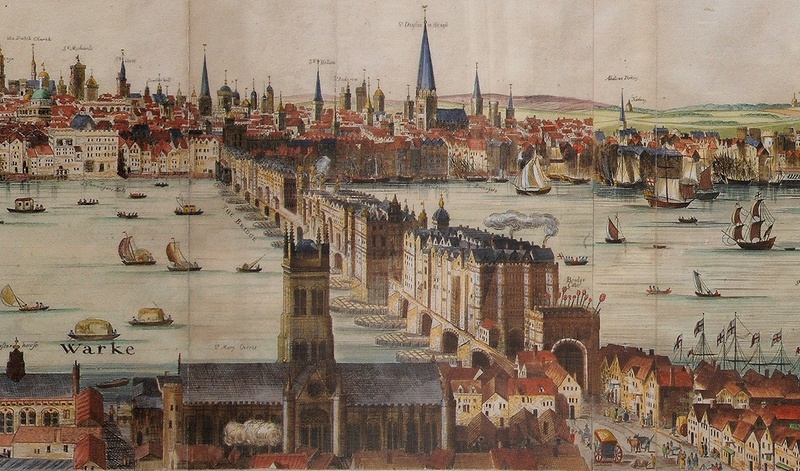The Tallow Chandlers' Company was formed in about 1300 to regulate oils, ointments, lubricants and fat-based preservatives and to manage candle making using tallow (animal fats). Over the next 150 years we expanded in membership and influence, before being granted a coat of arms in 1456 by Henry VI, and then full livery status by Edward IV in 1462.
Company Timeline
1300s
1400s
1500s
1600s
1700s
1800s
1900s
2000s
1300s

1334
Tallow is being traded between London and Perth, Scotland, in ships owned by London tallow chandlers.
1376
Tallow chandlers are ranked with the other great mysteries and trades named in the Act of Edward III which appoints trades and crafts.
1400s

1456
A Grant of Arms is issued to the Tallow Chandlers' Company.
1461
City lay orders all households in London to hang a lantern lit by a tallow candle outside of their homes, as one of the City's earliest forms of street lighting.
1462
The Tallow Chandlers' Company is issued with a Charter of Incorporation by Edward IV, granting the Company authority over tallow candle making in the City of London.
1476
The Tallow Chandlers' Company purchases a Hall on its current site on Dowgate Hill, having previously been occupying a hall on the corner of Old Broad Street and Throgmorton Street.
1500s

1512
Letters Patent are granted by Henry VIII authorising the Lord Mayor with the Master and Wardens of the Tallow Chandlers to search for all manner of oils brought into the City for sale, and to destroy all found defective or wrongly mixed.
1516
Tallow Chandlers are placed 21st in order of precedence among Livery Companies.
Henry VIII issues a Charter confirming the Company’s incorporation as well as a pardon for all trespasses committed before his accession.
1600s

1603
The Tallow Chandlers’ Company receives a beautifully illuminated Confirmation of Arms from Elizabeth I.
1653
The English Civil War comes to an end, having nearly bankrupted the Tallow Chandlers’ Company.
1666
The Great Fire of London destroys almost the entire city, including Tallow Chandlers’ Hall, together with 27 other Company owned houses and tenements. However, many of the precious documents and some furniture is saved by the quick-thinking Master, Richard Edlin.
1672
The rebuilding of Tallow Chandlers’ Hall is completed.
1675
Along with the Tin Plate Workers’ and Horners’ Companies, the Tallow Chandlers’ Company petition against the introduction of oil-lamp street lighting in the City.
1700s

1709
A shop owner is successful in claiming damages for the Tallow Chandlers’ unlawful breaking of his candles, resulting in all deputations for searches by the Company being suspended the following year.
1784
It is passed by the Common Council that any tallow chandler in the City of London wishing to join a Livery must join the Tallow Chandlers’ Company and no other.
1800s

1826
Sir Roger Monk becomes Master of the Company, going on to donate many of the beautiful paintings still hanging in the Main Hall.
1853
All tax on soap and tallow is removed.
1871
Tallow Chandlers’ Hall undergoes significant restoration.
1900s

1903
Stained glass windows are installed in the Main Hall to commemorate the Coronation of Edward VII.
1939
On the outbreak of the Second World War, almost all the Company archives are transferred to the Clerk’s safety deposit vault, a steel bell-shaped shelter is installed in the courtyard, stained glass is boarded up and precious items are moved to the basement.
1945
A Reunion Livery Dinner is held at the (largely unscathed) Tallow Chandlers’ Hall, the first Company dinner held in seven years.
1961-2
To celebrate the 500th anniversary of the Company’s Incorporation, a new royal charter and grant of arms are granted by Elizabeth II, and an Anniversary Banquet is held at Mansion House.
1978
The Company’s Benevolent Fund is set up, with £30,000 bequeathed by the Company Clerk, Randall Monier-Williams.
1990
Remains of a 1.5m thick Roman wall, possibly a riverside wall, are discovered underneath Tallow Chandlers’ Hall.
2000s

2012
The Tallow Chandlers’ Company celebrates its 550th anniversary.
2013
The Company supports its first flagship school: Greig City Academy in Haringey.
2016
The Company begins its support of two more flagship schools: The Halley Academy in Greenwich and Cubitt Town Primary School in Tower Hamlets.
2022
The Company funds the Engineering & Design Centre at the Halley Academy.
2023
To commemorate the Platinum Jubilee of Queen Elizabeth II, a stained glass roundel window is installed in the Main Hall.
‘Need to know’ facts about the Tallow Chandlers’ Company

The History of Company Roles
Have we always had Masters, Clerks and Beadles?
Find out more

Coat of Arms
What is the meaning behind our Coat of Arms?
Find out more

Dining at Tallow Chandlers Hall
What was it like to dine at the Tallow Chandlers’ Hall?
Find out more

From Candles to Charity
How has Company business changed over the years?
Find out more

The City of London and the Tallow Candle Trade
What is a Tallow Chandler?
Find out more

Tallow
What is it and where does it come from?
Find out more
.png)


